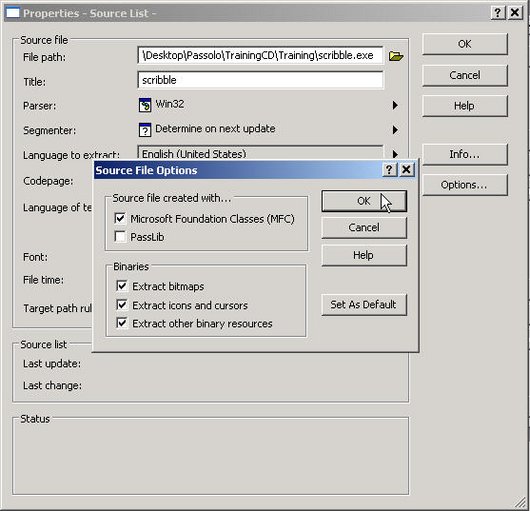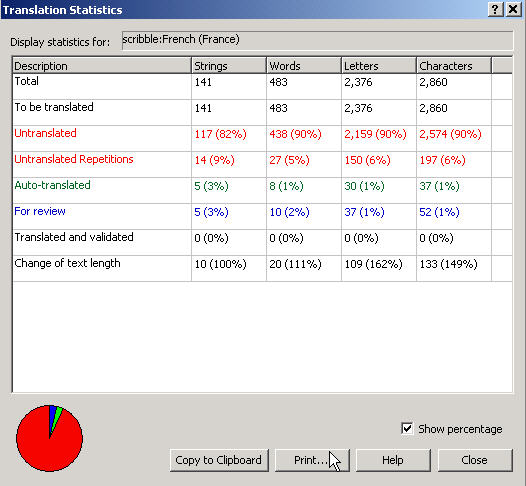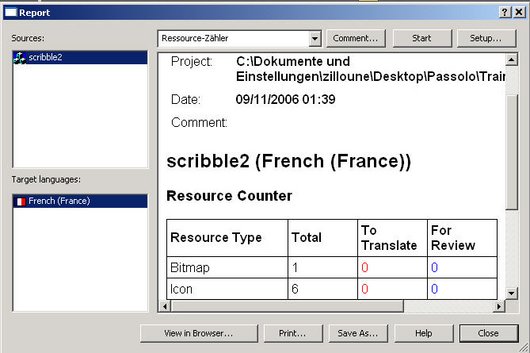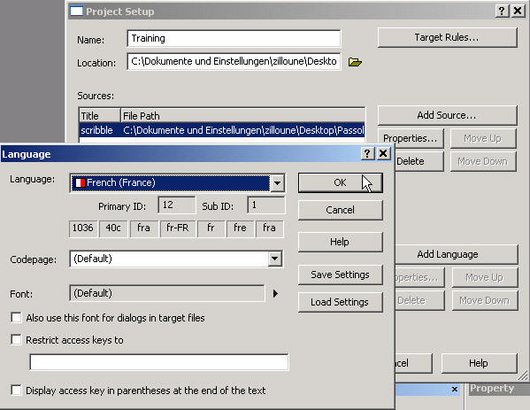
Possible project management features of software L10N tools include:
The management of:
- project file names (defining a logical system to name all project files in the same way)
- storage locations of project files (where will project files be stored, creation of paths, folder structures)
- source and target files (and locations)
- source and target languages (number and which target languages)
- reference materials (previous translations, translation memories, handbooks, previously translated documentation)

The assignment of:
- Parsers: Since parsers analyse the structure of source files and extract the translatable text, the selection of the appropriate parser will always depend on the localisation format
- Codepages: Since character sets used in different countries or languages are supported by different codepages, choosing the appropriate codepage for a localisation project is fundamental. Otherwise the character set will not be interpreted correctly and data may be corrupted. Codepages are referred to by number (e.g. codepage 932 represents the Japanese character set). Today, the use of UNICODE is preferred, because it supports all languages; so, you only have to specify one codepage (UNICODE) and character sets for all languages will be supported.
- Languages: assigning source and target languages in the project
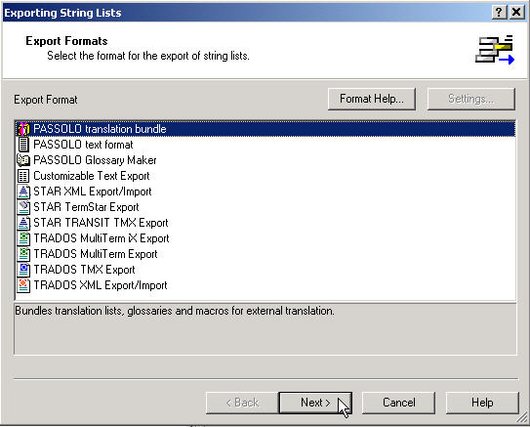
Some other specific PM features that L10N tools – such as PASSOLO – can offer are:
- Creation and editing of translation tool kits or translation bundles: These kits or bundles package all the data required for external editing or processing of part of a project into a single file. These compressed files can contain any number of translation lists and target languages, glossaries, macros for custom test functions, notes for translators and/or the data for menus and dialogues.


